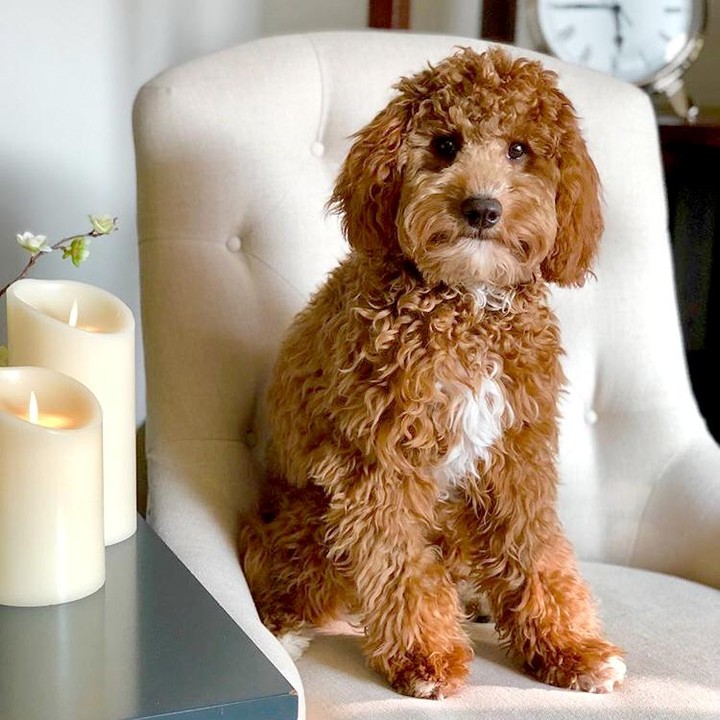Getting a pet for the first time but don’t know how to pet-proof your house? Or maybe you’re tired of the constant messes and want to know how to create a lovely, pet-friendly home where both you and your pet feel comfortable? You’ve come to the right place!
Today we’re sharing our top styling tips and ideas to help you create a home that is equal parts beautiful, clean, and pet-friendly!
Get Pet-Friendly Furniture
One of the biggest problems pet owners run into is how to keep pets off the furniture, and when you give up trying (c’mon, it’s inevitable that they’ll win!) how to keep your furniture clean, fresh-looking, and hair-free.
The answer? Buy pet-friendly furniture! Go for quality fabrics and textiles that won’t easily scratch, collect hair, or get stained. Some good options for couch and chair materials include leather, synthetic micro-fibers, and canvas.
Also, pay attention to the non-cloth parts of your furniture, like couch legs and coffee tables. These look a lot like chew toys for many dogs, so if your pet is a chewer, you’ll want to steer away from wicker, wood, and rattan, opting instead for metal or chrome.
Coordinate Colors

Speaking of furniture, it’s also a great idea to match your upholstered couch and chair colors to your pet’s fur. Sounds crazy? Trust us, it’s not. The last thing you want is your pet’s fur to be front and center for all to see.
So next time you’re tempted to buy that black velvet couch (even though you have a white, long-haired kitty), do yourself a favor and don’t get it. Instead, get the white or cream one, you’ll thank us later.
Invest in Hard Surface Floors

If possible, choose hard surface floors for your home. Pet’s paws and fur deposit mud (and other unmentionables!) on the floor, so if you’re trying to design a pet-friendly home, it’s best to go for hard surface floors for easier cleanup and to reduce potential carpet odors.
Pet-Friendly Pro Tip: Not all hard floors are created equal when it comes to being pet-friendly. Hardwood floors scratch and dent easily and puddles (from water and potential accidents) have to be cleaned up right away to avoid stains, so tile or laminate flooring is usually a better choice.
Don’t Splurge on Rugs

While you may be tempted to cover your hard surface floors with luxurious, expensive rugs, keep in mind they will most likely take on an odor or get stained, chewed up, and worn down over time, so pick rugs you won’t mind replacing in a year or so.
Choose Decorations Carefully
Pets don’t know what “careful” means, and they don’t know how to tiptoe around the house! They’ll wag their tails and knock over knick-knacks or climb up the furniture and get into things they shouldn’t. It’s inevitable. Which means you (and your house) have to be prepared!
Decorate with non-breakables and inexpensive items when possible, and make sure to keep your prized items out of reach of wagging tails and climbing paws.
Put out the Flames

Burning candles can pose a huge threat to your pets—from emitting dangerous toxins into the air they breathe to the possibility of them accidentally knocking the candle over and causing a fire—it’s never a good idea to burn candles if you have pets.
But if you love candles and don’t want to give them up (we understand, candles are the best!) simply switch out your regular candles with pet-safe, flameless ones like these from our shop.
Beware of Plants
Love decorating with live plants? We do too! But when you have pets, it’s extremely important to do your research first since many common houseplants are actually toxic to animals (and as most pet owners will tell you, pets like to chew on plants).
A few house plants safe for cats and dogs include spider plants, areca palm, Calathea (aka zebra plant), and the Boston fern.
Create a Pet Zone
If you don’t fancy the idea of puddles of water, scattered food, or kitty litter collecting in your kitchen or living space (who does?), consider creating a pet zone. Maybe it’s in your laundry or mudroom, in the basement, or near the entryway.
Wherever you decide to put the “pet zone,” make sure your pet knows it’s his special spot where he gets his food and water, where the litter box goes (if you have a cat), and where he lays in his bed. This helps keep the pet mess away from the rest of the house and makes cleaning easier!
How to Create a Pet-Friendly Home
So there you have it, our top tips on how to create a pet-friendly home! If you’ve been daunted by the thought of bringing home a pet, or overwhelmed by your current pet-home situation, start by integrating just one of these tips today into your house and you’ll be on your way to creating a pet-friendly home!




